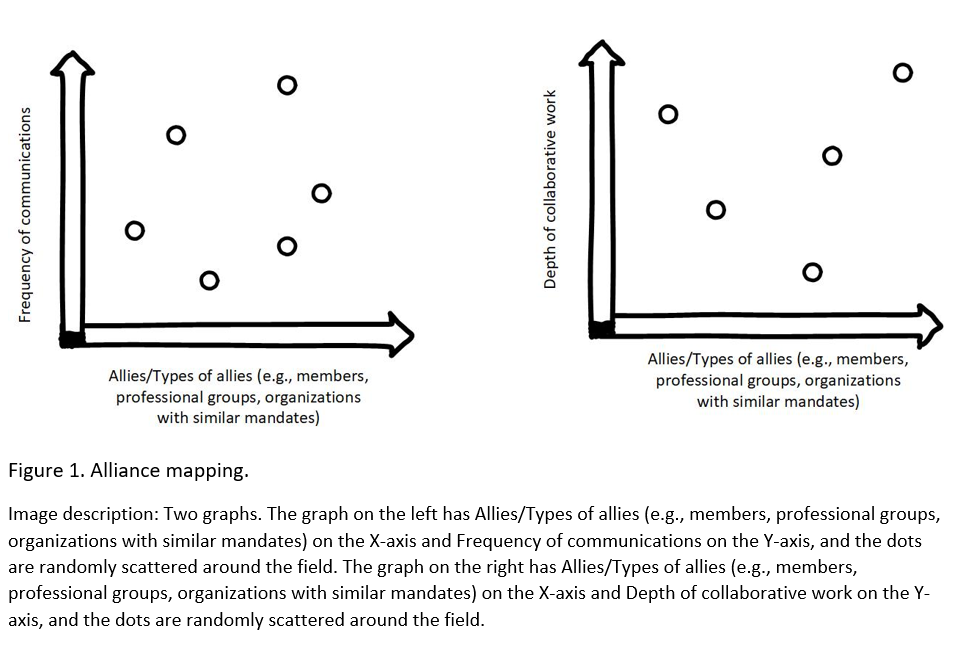As we covered in Part 1 of this two-part blog, advocacy is dynamic and not linear. No matter how clearly an organization articulates a pathway to a desired long-term policy change goal, it would be virtually impossible to name, predict or explain all the variables that might be important within that change process. This unpredictability makes it important to clearly define the specific short- and medium-term outcomes (i.e., steps toward your desired policy change) and ensure these outcomes are monitored using a variety of methods. Some of the examples of the outcomes include:
- a strengthened relationship with allies and partners or
- a strengthened organizational commitment to and resources to advocacy.
Outcomes are typically expressed as a change in something or as “forward progress,” e.g., increases in skills or improved conditions. However, outcomes for advocacy and policy work might be “defensive” in nature, such as holding the line on bedrock human rights or enacting environmental protection legislation. However, we can still think of certain aspects of advocacy in terms of “forward progress”.
One tool that community-based organizations might consider using is Alliance mapping. It can be used if teams want to measure the impacts of strengthening relationships between allies. When doing this work we will probably need to operationalize what we want to measure, such as the frequency and depth of contact and degree of similarity of advocacy agendas. Alliance mapping can be an effective way to evaluate how strong the relationship between allies is.

By tracking this outcome, we will be able to build or diversify an alliance, directly influence the public or policymakers through the profile and activities of alliance members, and build an alliance capacity. We need to keep in mind though that this method needs to be used consistently at different time points to see any change. Allies can be mapped according to whether they are considered as core (closely aligned and essential to the effort), strategic (aligned with shared objectives and in a position to make key contributions) or tactical (aligned around a particular “ask” and willing to take a specific, time bound action). Here’s an example of alliance mapping. This method can be supplemented with intercept interviews/debriefs with your partners and allies to get a real-time feedback on how they view your relationship and its strength on a particular issue.
As this example demonstrates, advocacy measurement and evaluation approach depends on what aspect of advocacy you want to measure. Given the highly dynamic and unpredictable nature of advocacy, its evaluation requires a focus on measuring the process, strategy evolution, patterns, connections, perspectives, and trends. In other words, we need to move from viewing advocacy from a cause-effect lens (as many of our program evaluations currently focus on) to evaluating advocacy as part of a complex system. Advocacy evaluation will require multiple methods and tracking mechanisms (e.g., media tracking to capture the changes in how the issue has been covered over time) and will include a mix of traditional methods, such as interviews and surveys as well as other creative tools, such as appreciative inquiry, World Café, actor mapping, timeline mapping, trend mapping, and many more.
Please review the resources below to explore these different methods and approaches.
Learn More:
- Advocacy Evaluation Models
- Advocacy and social justice: measuring impact
- Systems Thinking Toolkit
- A Guide to measuring advocacy and policy
Learn more about PAN’s advocacy work in the Policy change and collective action section.
 Questions? Feedback? Get in touch! Alfiya Battalova, Evaluation Manager, [email protected]
Questions? Feedback? Get in touch! Alfiya Battalova, Evaluation Manager, [email protected]
